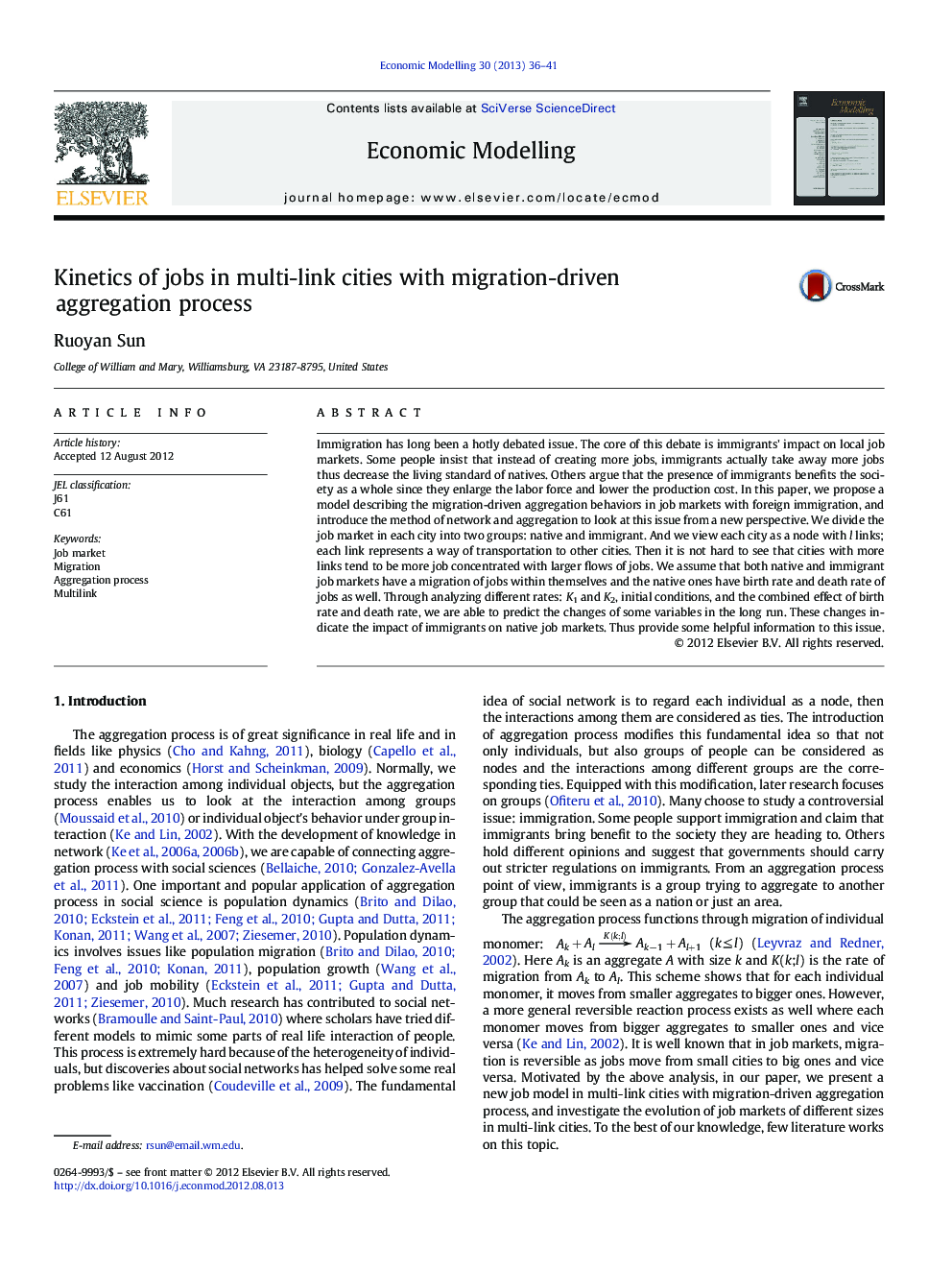| Article ID | Journal | Published Year | Pages | File Type |
|---|---|---|---|---|
| 5054687 | Economic Modelling | 2013 | 6 Pages |
Immigration has long been a hotly debated issue. The core of this debate is immigrants' impact on local job markets. Some people insist that instead of creating more jobs, immigrants actually take away more jobs thus decrease the living standard of natives. Others argue that the presence of immigrants benefits the society as a whole since they enlarge the labor force and lower the production cost. In this paper, we propose a model describing the migration-driven aggregation behaviors in job markets with foreign immigration, and introduce the method of network and aggregation to look at this issue from a new perspective. We divide the job market in each city into two groups: native and immigrant. And we view each city as a node with l links; each link represents a way of transportation to other cities. Then it is not hard to see that cities with more links tend to be more job concentrated with larger flows of jobs. We assume that both native and immigrant job markets have a migration of jobs within themselves and the native ones have birth rate and death rate of jobs as well. Through analyzing different rates: K1 and K2, initial conditions, and the combined effect of birth rate and death rate, we are able to predict the changes of some variables in the long run. These changes indicate the impact of immigrants on native job markets. Thus provide some helpful information to this issue.
⺠A reversible aggregation model of job move in multi-link cities is proposed. ⺠We study the migration-driven aggregation behaviors over the longer term. ⺠The results indicate the impact of immigrants on native job markets. ⺠Some helpful informations to this issue are proposed.
